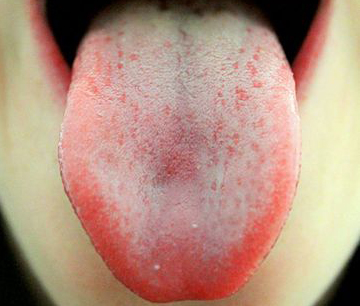 I thought I would write a blog about this ridiculous weight loss procedure as many of you have asked me about it.
I thought I would write a blog about this ridiculous weight loss procedure as many of you have asked me about it.
The idea of “No pain no gain” is taken to new heights in bariatric medicine with the latest fad of having a plastic patch sewn onto the top of your tongue for thirty days to make it too painful to eat solid food.
It costs only $2000 and is touted to be more affordable and less invasive than more extreme surgical methods such as gastric bypass surgery or the lap band which can cost $15,000-$20,000. The procedure was introduced 5 years ago by a Beverly Hills cosmetic surgeon Dr. Nikolas Chugay after he saw is being done in Latin America. A hard plastic mesh (a material which is typically used in hernia repair); about the size of a postage stamp is secured to the top of the tongue by six stitches. The procedure takes about 10 minutes and it’s done under local anesthesia. The Recovery is usually rapid with patients typically returning to work the following day. Although the patch can be removed any time by snipping the sutures, it is usually removed after 30 days.
So once the tongue patch is in place, the consumption of solid food becomes very painful and uncomfortable because it has a rough surface. So as you are swallowing solid food, the tongue is pushing the food up against the roof of the mouth and back into the throat which makes eating painful. In addition, the sutures, which are basically fishing line, have little sharp points as well which also rub against the top of the mouth.
So what this all means is that when you have a tongue patch, eating greasy fish and chips, or burgers are too painful and the patient is forced to only consume food in liquid form. Patients basically go on a strict 800-calorie per day liquid diet of juice, broth and protein shakes until the patch is removed after 30 days. This then is thought to maximize weight loss results.The tongue patch has now been implanted in over 100 patients to date and the average weight loss is 10 kg in a month.
Risks: There are risks with any type of surgery, post operatively, patients may experience swelling of the tongue for 24-48 hours and speech is impaired but usually returns to baseline within 48 hours. It is a foreign material that is placed on your tongue so there are of risks of infections or rejection. Patients have experienced speech difficulties thereafter, while others have trouble sleeping. This procedure has yet to receive FDA approval in the US and would have to pass rigorous clinical trials before it would get approved in Australia.
Dr Pals Opinion
I think it is an extreme and ridiculous procedure. Patient say that they are actually terrified of eating solid food because of the pain that is associated if they try. Pain should never be associated with weight loss. This not the message we as health professionals want to portray. I would never support a procedure that would cause a patient pain. Unfortunately some people are so desperate to lose weight they are willing to do anything.
People need to understand that the tongue patch is a short-term weight-loss aid with eating decisions dictated by a plastic patch sewn into the tongue. Not eating is easy when you physically can’t, but when the patch is removed what is to stop you from going back to old habits. After a month on soup, I would have thought the pizza shop would be the first port of call!
The idea that every time that you eat solid food, you experience pain and that this will permanently stop you from eating solids and sort all your problems out, is absurd!!
There is not a shred of evidence that putting a patch on your tongue and not being able to eat for just a month is going to have any effect on you one year from now. In fact most people who go on extreme diets and experience rapid weight loss eventually gain it all back and more. This supposedly “miracle” tongue patch is not going to solve your weight loss issues. Weight loss, should be a balance healthy eating and daily activity, something that is enjoyable and pain free and can be incorporated in our daily lives.
No matter how creative we get with these new inventions and fads, patients will still ultimately need to change their knowledge base, habits and their behaviors towards foods for successful long-term weight management.
Let’s hope we don’t go down this path in Australia!
Dr Sebely Pal from Dr Pal Program

